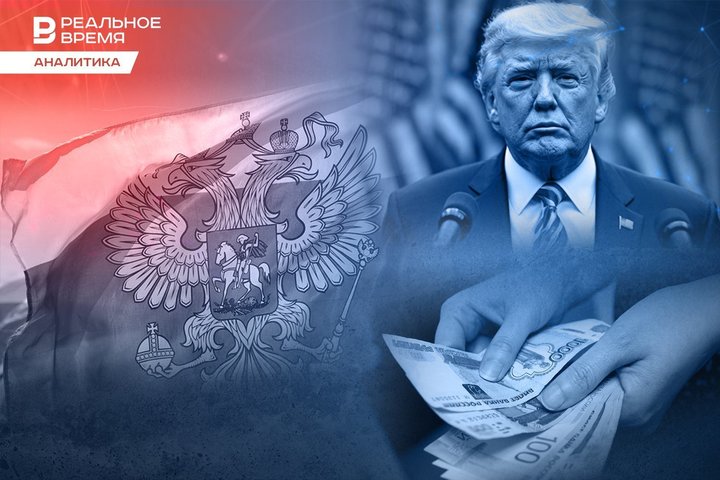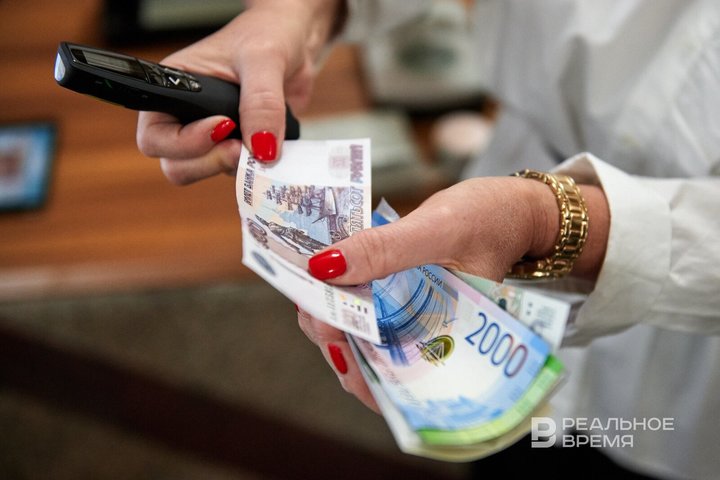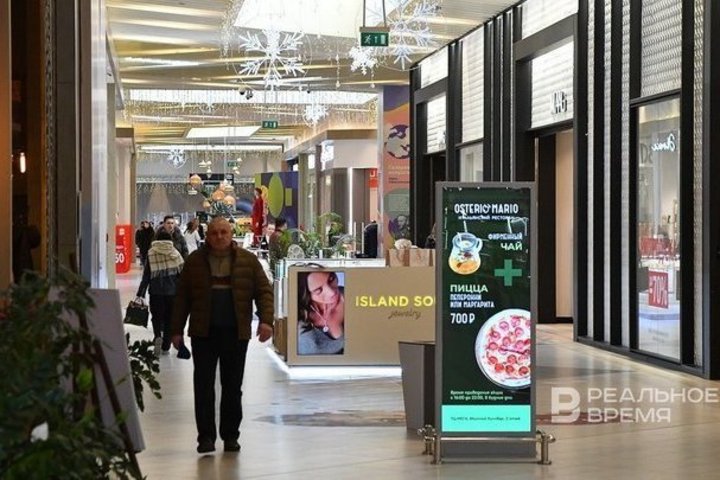Echo of geopolitics: how US-Russia talks changing the economic agenda

The strengthening of the ruble, the expectation of the lifting of sanctions and the prospects of investors — how the resolution of the conflict in Ukraine affects the country's economy. Which of the sanctions can be lifted first, whether one should expect a rapid return of Western companies to Russia and whether the ruble will strengthen for a long time — read in the material of the analytical service of Realnoe Vremya.
Immediate cancellation of the entire sanctions package should not be expected.
The ruble has continued to strengthen since the beginning of 2025 — the official dollar exchange rate on March 18 was set by the Central Bank of Russia at 84.31 rubles. The day before, the over-the-counter dollar exchange rate fell below 82 rubles for the first time since June 20, 2024.

The situation with the strengthening of the ruble affects inflation in the country. Most likely, we will see this as one of the arguments for maintaining the key rate at the current level at the next meetings of the Central Bank of Russia, he believes.
Such ruble exchange rate is unprofitable for the budget, although the budget adapts. “It is highly likely that we will see a repeat of last year's scenario, when the ruble strengthened at the beginning of the year, but then it still fluctuated very strongly," the analyst predicts. Tabakh expects the average value to be around 96-97 rubles per dollar, and at the end of the year — around 100 rubles, as it has been recently.

“Immediate cancellation of the entire sanctions package should not be expected. And in general, there is no need to be overly optimistic. Sanctions will be imposed as a basic scenario, but the fate of sanctions depends on the general circumstances and on the details. Perhaps, the American and European stories will be different, and American sanctions will be eased earlier than European ones," the expert does not exclude. In his opinion, the sanctions in the financial sector will remain in effect for a long time, and perhaps they will never be lifted.
The return of investors also strongly depends on the sector, the circumstances of the withdrawal, the compulsion of this withdrawal and the conditions under which they left, Anton Tabakh notes.
Part of the sanctions can be lifted instantly

In his opinion, the strengthening of the ruble will not affect inflation, since today prices are rising along the chain of “tariffs of natural monopolies, logistics, and the like.” “In addition, manufacturers and traders invest their risks in prices, but they remain high. So far, effective demand allows businesses not to lower prices, even despite the strengthening of the ruble," Art notes. “Besides, there is global inflation, which also dictates its circumstances. Many things, especially in the food sector, continue to rise in price in dollars, so the strengthening of the ruble against the dollar does not change anything here. Now, for example, there is a sharp increase in dollars for cocoa, coffee beans, vegetable oil, chicken eggs and some other food items.”

“I said back in the autumn that in the event of a peace agreement, some of the sanctions would be lifted instantly, primarily in the field of finance, the supply of cash to Russia and the export of raw materials," the expert recalls. “Sanctions on dual-use goods will remain for a long time.”
The lifting of sanctions will boost the Russian economy and stock market, but it is hardly appropriate to talk about a rapid return of non-resident investors, he believes. “Most likely, investors will come specifically to those projects that can become a zone of cooperation between the United States and Russia," he suggests. “Alternatively, through third parties (for example, Asian funds), foreign investors can enter those Russian companies that have great prospects for lifting some of the sanctions and which are now rated quite low. These are metallurgy, fertiliser production and some other export areas.” Investors are unlikely to return to companies operating in the Russian domestic market in the foreseeable future, the expert believes.
Large Western businesses will not return to Russia yet
“The strengthening of the ruble last week, when the exchange rate of the yuan, dollar and euro showed a second wave of decline to the lows of the year, can be perceived as the finalisation of the trend towards strengthening the Russian currency," says Finam analyst Alexander Potavin. “We expect the ruble's position to weaken in the spring, but this process will be gradual. To speak with confidence about the end of the ruble's strengthening phase, it is necessary to see the dollar's recovery to at least 92 rubles.”

The combination of low prices for Russian oil with a strong ruble exchange rate creates the prerequisites for a significant shortfall in oil and gas revenues, which is still ignored by the foreign exchange market. According to FG Finam, the fair dollar exchange rate is now around 100 rubles.
The geopolitical factor will have a significant impact on the ruble exchange rate in 2025. American President Donald Trump is a master negotiator who can quickly change his mind to achieve the desired goals. “In early March, the US president decided to extend a number of sanctions against Russia for a year. Earlier, the media reported that the US president was considering the possibility of imposing new sanctions against Russia to achieve a peaceful settlement of the Ukrainian crisis. However, at the same time, Trump instructed the US government to consider the possibility of lifting sanctions against Russia in case of progress in negotiations, which will restore economic ties with Moscow," Potavin said.
According to Potavin, the gradual lifting of sanctions, which everyone is waiting for, will not lead to any serious changes in the Russian economy. “Russia can no longer sell oil (OPEC quotas are linked), world oil prices may react by decreasing to the lifting of sanctions from Russia, which partially offsets the reduction in the Urals discount relative to Brent," he lists. “I don't really believe in a large influx of external speculative capital to Russia either, since this requires a full-fledged resumption of operations with the dollar and euro and the restoration of SWIFT operations.”
At the same time, the lifting of sanctions may lead to the opposite effect — increased capital outflow from the country, which was waiting for such relief.

Obviously, large foreign businesses will not return to Russia for the time being, as there are too many risks. Starting with the fact that Russia remains under severe Western sanctions, which significantly complicate or make impossible the normal functioning of generally accepted business processes. Plus, returning to Russia will be perceived as supporting the actions of the Russian authorities, which will negatively affect the reputation of foreign companies.
In addition, significant changes have taken place in Russian legislation over the past three years, which create great difficulties for the opening and operation of most foreign companies. Therefore, we do not expect large foreign businesses to return to Russia in the foreseeable future.

The slight slowdown in inflation in Russia in recent weeks is a consequence of the tight monetary policy currently being pursued by the Central Bank, which keeps the key rate at 21% with official inflation in the country at about 10%. “Inflation in Russia is still too high (and continues to rise in annual terms), but its current rate, adjusted for seasonality, is gradually slowing down. The strengthening of the ruble may contribute to slowing inflation, but its sustainability is still questionable, and the unfolding trade wars increase the risks to the global economy and Russian exports," the expert concluded.
It is impossible to predict the ruble exchange rate
“The ruble exchange rate will depend on geopolitics, monetary policy in Russia and the state of world oil prices. If negotiations with the United States are successful, the sanctions pressure on the Russian economy will decrease, which will allow the ruble to strengthen. Otherwise, a significant weakening of the ruble is possible. Therefore, it is impossible to predict the ruble exchange rate, since today there are subjective multidirectional factors," explains Rustem Shayakhmetov, an economist, the head of R-Invest.

Even if the United States quickly reaches an agreement with Russia, everyone will expect final decisions to end the conflict and their implementation. The speed of Western companies' return to our markets will depend on the dynamics of Western countries' relations with Russia towards normalisation, and it will also depend on the amount of costs they incur when returning to Russia and the profitability of their investments.
“We should also not forget that they will have to compete with the business structures that have taken their place in the market. Therefore, according to the combination of factors, one should not expect an explosive growth of Western investments in Russia," concluded Rustem Shayakhmetov.